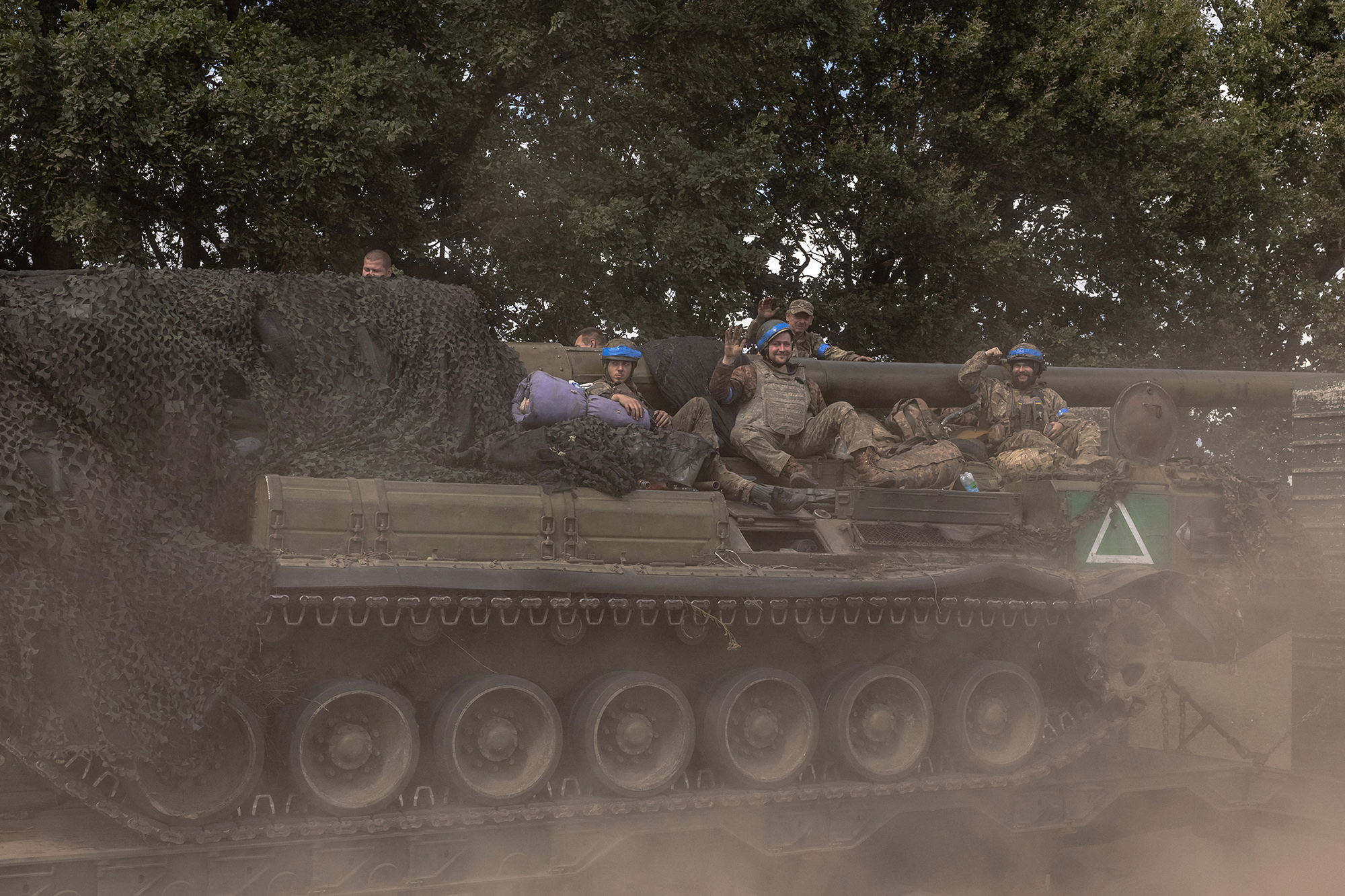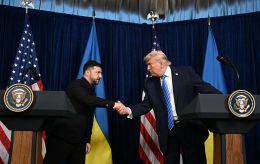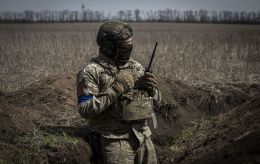Risk zone: What to expect from Ukrainian offensive in Kursk and how it could change war
 Illustrative photo (Getty Images)
Illustrative photo (Getty Images)
In the second week of the offensive, the Armed Forces of Ukraine expanded their control in the Kursk region and continued to advance. RBC-Ukraine explores what the objectives and goals of this operation are.
Contents
After two weeks of operations in the Kursk region, Russia has managed to slow down somewhat, but not halt Ukraine's advance. According to the General Staff, the Ukrainian Armed Forces (UAF) now control over 1,250 square kilometers of territory and 92 settlements.
Despite measured statements from official spokespeople and officials, the immediate objectives of Ukrainian units in the Kursk region have become clearer over the past week. The main intrigue remains whether the next phase of this operation will take place and what its strategic goal will be, as the further moves of both sides will determine the development of events along the entire front.
Situation in Kursk direction
Currently, Ukrainian troops can move in five directions on the Kursk bridgehead, covering four districts of the Kursk region.
The first direction is along the Sudzha-Kursk road (R200), where Ukrainian units have consolidated in Sudzha itself and surrounding villages over the past week, though no significant further advances have been confirmed.
The second is southeast of Sudzha towards the settlements of Plekhovo and Borki. Over the past week, there were reports that the UAF advanced towards Giriya in this direction, though it is unclear whether they have secured the area.
The third direction is along the Sudzha-Lgov road. Confirmed reports indicate that our military has taken positions near Malaya Loknya, though fighting likely also took place in other settlements up to near Kauchuk.
The fourth direction is along the Sudzha-Korenyevo-Rylsk road. Over the past week, Ukrainian units entered and engaged in battles in the village of Korenyevo. The city of Rylsk is just over 20 kilometers from there.
There has also been activity in a fifth direction, west of Korenyevo, covering part of the Glushkovsky district. Here, the Armed Forces have damaged all three bridges over the Seym River, which flows from west to east along this district. Essentially, the entire area of about 250 square kilometers south of the river is now cut off from the rest of Kursk, along with the supply lines of Russian forces in this sector. Ukrainian units have already begun entering some settlements on this bridgehead.
Over two weeks of fighting, the enemy's units continue to display low maneuverability, and the Russian command has been very slow to react to the crisis. They have managed to organize defenses in isolated strongholds but have not been able to create a continuous defense line.
It seems that the immediate task of Ukrainian units is to take control of the part of the Kursk region south of the Seym River in the Glushkovsky district, as well as the "triangle" of Sudzha-Rylsk-Sovetskaya Derevnya (where the E38 Rylsk-Kursk road intersects with the R200 road from Sudzha). Currently, the focus is on advancing along the width of the front rather than deepening it, to reduce the risks of flank attacks and strikes on our logistics.
Ukraine does not plan to annex territories in the Kursk or other Russian regions. President Volodymyr Zelenskyy said that the goal of the operation is, among other things, to create a buffer zone. Pushing back the occupying forces should reduce artillery strikes on border areas, though this is likely just one, and not the most important, of the objectives.
Military objectives
The primary objective could be to divert Russian troops from other directions. Some Russian pro-war bloggers have already suggested that the UAF's advance in the Kursk region is a diversionary operation before the next phase – a strike on another front, possibly in the South.
"The main goal of this operation, in my view, is to create a threat to the enemy's Sever group, which is attacking Vovchansk, Lyptsi, Hlyboke, and trying to create problems for us in the Kharkiv region. If the military objectives of the operation outweigh the political ones, I would expect combat operations against the Sever group in the Belgorod region within the next month," suggested Viktor Kevliuk, an expert at the Center for Defense Strategies.
He explained that expanding the control zone in the Kursk region to the east is a way, under favorable conditions, to outflank the Russian group advancing from the Belgorod region towards the Kharkiv direction. If, in addition, the UAF organizes a strike from Kharkiv towards Belgorod, the enemy could find itself in a painful situation.
"We have shown that Russia does not have secure borders. We have shown that we can conduct such raid actions on other parts of the front as well. This means we can strike elsewhere, forcing the enemy to pay more attention to other areas, thereby limiting its ability to conduct swift offensive actions in other directions," says military expert Serhii Hrabskyi.
He suggested that the goal of the Kursk operation might be an attempt to stretch the front for the enemy. In this way, Moscow will be forced to distribute its resources over a larger area.
"Can we strike, for example, in the Bryansk or Belgorod region? We can. Do the Russians know this? They do, but they don't know where exactly. And to avoid facing what happened in the Kursk region, they will be forced to distribute their troops over larger sections of the front. Therefore, even if a decision is made tomorrow to withdraw our troops from the Kursk region, there would be nothing dramatic about it," says Hrabskyi.

The territory controlled by the Ukrainian Armed Forces in the Kursk region (map: liveuamap)
At the same time, a source in the government told RBC-Ukraine that one of the main goals Ukraine set for itself in this operation was to force Moscow to transfer troops from Donbas to the Kursk direction. This would slow down the enemy's advance, which has been slow but steadily pushing deeper into Ukrainian territory. However, the source noted that this goal has not yet been achieved.
Another source in the military-political leadership mentioned that the occupying forces received orders from Putin to retake the Kursk region by October 1. However, their task is to do so without withdrawing forces from key areas where Russia is advancing in Donbas, particularly in the Pokrovsk and Toretsk directions. So far, the enemy's advance in these directions has not slowed down – rather, it has intensified.
"Right now, the enemy is pulling troops directly from the front line. For example, two brigades have been withdrawn from the Zaporizhzhia region, and two airborne assault battalions have been taken from reserves in the Kherson direction. The 810th brigade of the Black Sea Fleet, which was in the Kherson direction, and the 155th Marine Brigade, which fought near Vuhledar, have ended up in the Kursk region. Even conscripts drafted in the spring of 2024 are being transferred," Kevliuk told RBC-Ukraine.
The Russians are now trying to direct a mix of units from all forward directions to the Kursk region, except for Pokrovsk and Toretsk. This, in turn, indicates that the enemy currently has very few "free" forces and reserves at its disposal. Secondly, the limited successes near Pokrovsk and Toretsk weigh more on the Kremlin's scales than regaining control over the Kursk region.
"Our opponent is mentally a fetishist and fatalist. They need a victory at any cost. They see victory at any cost in the Pokrovsk direction. They will throw all available resources into this 'furnace' to later produce an informational product for domestic consumption, showing how strong they are. Kursk doesn't offer them such opportunities. There, measures will be taken to stabilize the situation in a 'counter-terrorist operation' mode," Kevliuk added.
Ultimately, this may be the goal of the Ukrainian command – to press in the Kursk region until the Russians are forced to slightly thin out their forces in Donbas.
Political objectives
A source in the government says that the second goal of this operation is to raise the morale of Ukrainians – both military and civilian. After all, since 2022, the Ukrainian army has not had any truly significant victories "on the ground," while the Kursk operation is perceived by many as a major victory. This objective is also linked to another goal mentioned by the source – to show the West that Ukraine can not only defend itself but also deliver painful blows in response and even partially seize the initiative.
Indeed, in foreign media, even those generally positive towards Ukraine, a narrative has strengthened in recent months: given the current balance of resources and the nature of the fighting (the absence of surprise due to powerful technical intelligence on both sides), the UAF will not be able to defeat the Russians on the battlefield and reclaim its territory by military means. Therefore, the sides will inevitably have to negotiate.
The Kursk operation, on the other hand, has shown that this war is not a transparent battlefield and that surprises can still happen. Plus, the very fact that Ukraine is finally advancing while the Russians are retreating chaotically has positively influenced the mood of our Western allies, as they naturally want to be on the winning side.

One of the goals of the Kursk operation may be to draw Russian troops away from other areas of the front (photo: GettyImages)
Meanwhile, the audacious breakthrough of Ukrainian forces in the Kursk region has already caused significant damage to Putin's image, particularly among his allies and relatively neutral countries. The fact that in the third year of the full-scale war, his generals are forced to focus not on taking Kyiv, but on driving Ukrainians out of internationally recognized Russian territory, speaks volumes. Even the most radical speakers of the Russian regime, who typically threaten nuclear strikes on Kyiv, Berlin, and Washington at any opportunity, have forgotten their usual rhetoric this time.
Moscow clearly wasn't prepared for such an escalation. Nor does it seem ready for peace negotiations in the near future - now it is in a weaker position than just three weeks ago. According to a well-informed source, peace talks with Russia by the end of this year seem highly unlikely, though a Russian representative might participate in the second Peace Summit organized by Ukraine.
It's also noteworthy that usual calls for de-escalation from partners have ceased. Although the open advance of the Ukrainian army into Russian territory using foreign equipment is a significantly higher level of escalation than a missile strike deep into Russian territory, the restrictions on using Western weapons have not yet been fully lifted. Sources in the Ukrainian government link this to the inertia in thinking among Ukraine's allies, who are struggling to keep pace with rapidly evolving events.
Regarding the possibility of exchanging part of the Kursk region for Ukrainian territory occupied by Russians, several political sources consider this scenario likely. However, no one can yet say when, how, and under what conditions this might happen.
"The Kursk region could indeed be used as a bargaining chip in negotiations. It also aims to demonstrate the weakness of Putin's regime and push Russian aviation further from the Ukrainian border. But these are not the only goals. Our advance into the Kursk region is part of a broader plan. I think we'll see its development by the end of August," said another political source.
***
Ukraine has taken significant risks by committing its reserves to the Kursk operation rather than any other front.
"What is the main criterion for the effectiveness of our troops' actions? It's the destruction of the enemy's combat potential. Could we have achieved such effective strikes against the enemy in such a short time while constantly defending and repelling attacks? Not at all. Instead, we are talking about capturing approximately 2,000 enemy personnel - irrecoverable losses - just in the first week. This is a serious achievement with relatively few forces and resources," reflects Hrabskyi.
The breakthrough into Russian territory has indeed boosted Ukrainian morale. But the emotional pendulum, which has now swung to an absolute high, could swing back negatively with the same amplitude, especially if the enemy starts pushing us out of the Kursk region while advancing on other fronts.
"If the Russians push us out with heavy losses, such a shift in mood is likely. If they push us out without significant losses, this operation will overall be counted as a plus for Ukraine. The fact that we were there is undeniable, and this fact cannot be erased. Of course, this whole operation is a very risky endeavor," said a government source. He predicts that in about 2-3 weeks, the front line on Russian territory will stabilize and take relatively stable contours. He added that Ukrainian forces do not have the objective of holding every captured meter of Kursk land at any cost.
The offensive in the Kursk region is already affecting the balance of forces. But only the full picture of the Ukrainian command's plan and time will allow us to assess whether this is a risky operation with short-term positive effects or one that will radically change the course of the war.

